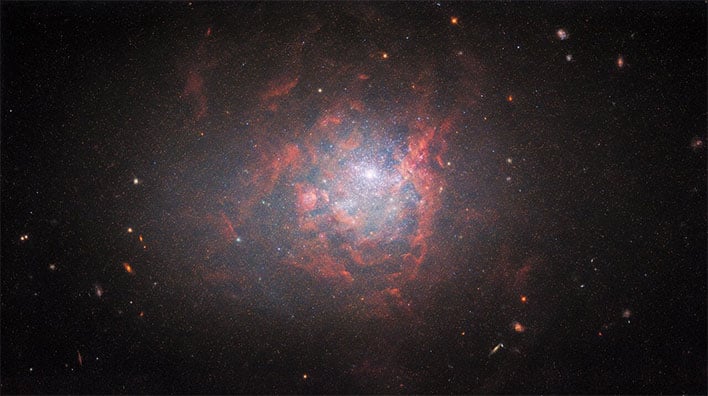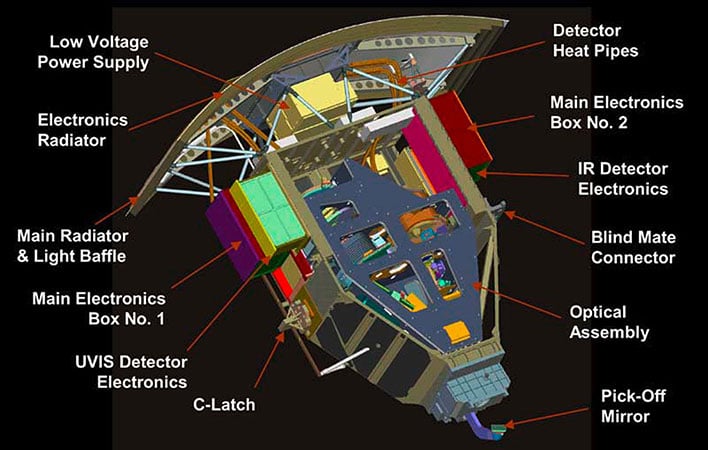NASA’s Space Telescope Detects A Cosmic Oddball 17 Million Light Years From Earth
The European Space Agency (ESA) has shared a spectacular photo of NGC 1705, a dwarf galaxy situated 17 million light years from Earth in the southern constellation Pictor. Taken with the NASA/ESA Hubble Space Telescope, the image shows that is described as a "cosmic oddball" after undergoing a spate of star formation called a starburst.
A starburst is when galaxies form stars at unusually high rates. Combined with being relatively small and irregularly shaped, NGC 1705 is a bit eccentric in the realm of galaxies, and those same characteristics are precisely what enable them to provide valuable data to scientists and astronomers on how galaxies are formed.
"Dwarf irregular galaxies tend to contain few elements other than hydrogen or helium, and are considered to be similar to the earliest galaxies that populated the Universe," ESA explains.
Schematics of the Hubble Space Telecsope's Wide Field Camera 3 (Source: NASA)
Incidentally, the Hubble Space Telescope has directed its sights to NGC 1705 before, though it's been a couple of decades. Back in 1999, astronomers peered at the galaxy using a Wide Field Planetary Camera 2, essentially a workhorse camera that served the telescope well at the time. But then in 2009, it was upgraded with the more technically advanced Wide Field Camera 3 that snapped the above photo. Compared to its predecessor, the newer camera offers improved resolution and a wider field of view
That camera upgrade has resulted in a much more detailed image of the dwarf galaxy. It was used to observe a specific wavelength of light known as H-alpha. This enabled astronomers to spy thousands of emission nebulae, which are glowing regions where hot, young stars engulf surrounding clouds of gas in ultraviolet light.
In case anyone is wondering, the James Webb Space Telescope (JWST) is not a replacement for Hubble, as the two have different capabilities and goals, and will operate at the same time. That said, JWST makes observations solely on infrared wavelengths, allowing it to see farther into the universe and back in time, so to speak. In that respect, it will serve as an eventual successor of sorts.
When Hubble launched in 1990, scientists figured it would be operational for 15 years. Various servicing missions have extended its lifespan. No further missions of the such are planned. However, Hubble is not expected to re-enter Earth's atmosphere until the mid-to-late 2030s at the earliest.
Thumbnail and Top Image Source: ESA/Hubble & NASA, R. Chandar



